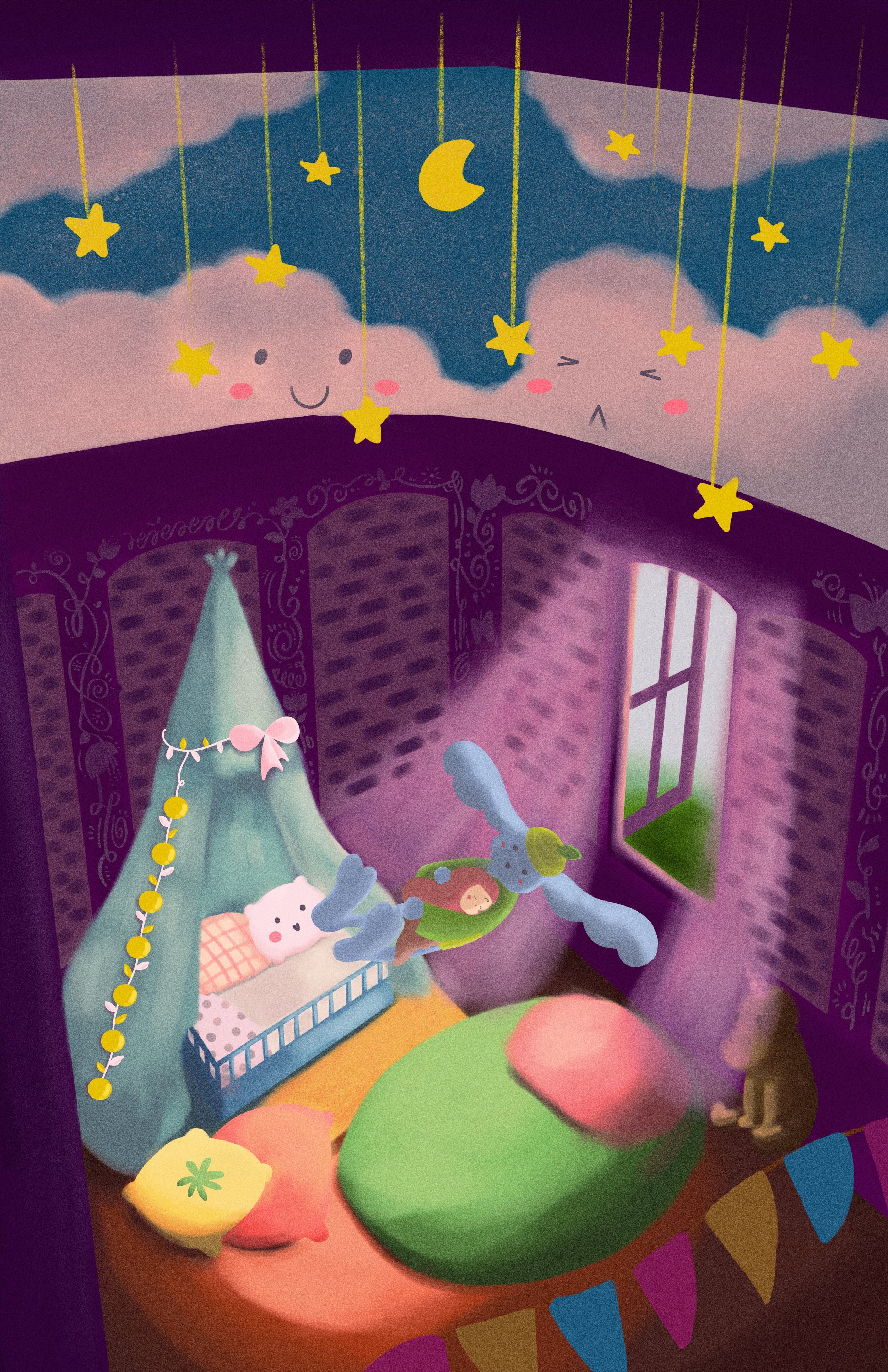5 Drawing Habits That Have Cultivated in Me
Whether you're a beginner or have some experience in drawing, it's important to cultivate the following habits to help you improve quickly in the shortest amount of time.
Horizontal Flip of Sketchbook/Canvas
It's important to remember to flip a sketchbook or canvas horizontally to observe the left-right symmetry of the image. If a drawing is not symmetrical, it might look odd and unbalanced. This concept relates to the Principle of Art called Symmetry. For example, sculptors use a turntable, similar to those used for decorating cakes, to rotate the clay as they work when sculpting, ensuring that their creations remain balanced. While flipping a drawing horizontally is simple on a tablet, it can be more challenging with traditional media like colored pencils. I used a mirror to help me modify my drawings before I got myself a tablet.
(3 years ago)
I didn't use horizontal flipping and as a result,
the burger looked unbalanced.
2. Develop a Detailed Illustration Plan
When creating an illustration, I start by jotting down my ideas. Then, I compile a list of keywords and search for reference images. As I find the necessary reference photos, I also visualize preferred angles. After that, I bring the imagined scenes to life by sketching 3 to 5 drafts or limiting myself to 3 sketches. I used to draw over 25 sketches while still in school because I couldn't decide and wanted to capture every angle. If I need to draw something I'm not very good at, such as plants, I will practice beforehand and work on the fluidity of my lines. Planning is essential to avoid compositional and coloring issues that may lead me to delete/erase the illustration and start over completely.
3. Finding and Establishing Your Color Style
Someone once said that my art style imitates a certain illustrator, I can’t deny the fact that I did learn from different illustrators and adopted their styles. As you work on finding your art style, it's essential to give equal attention to developing your color palette. Whether you're working on children's books, flat designs, comics, line art, or realistic illustrations, it's crucial to discover colors that are distinct to you or resonate with you, so that others can immediately recognize that the series of works is uniquely yours. I have experimented with different color combinations to develop my color palette. My current basic palette is red, green, and purple. I also use yellow and blue for layering and adding depth to the colors, to make the images more visually engaging.
4. Learn to squint and observe
When drawing or sketching, it's helpful to remember to squint. This allows us to blur the details and better observe the relationship between tonal values and the distribution of color blocks. The picture will vary when viewed from a distance compared to up close. Although I typically enjoy drawing in great detail, I always begin by working on the larger color blocks before moving on to the minute details that may go unnoticed. Make sure to squint while working to ensure your art looks great from a distance and up close!
2019
❌ If you squint your eyes, you can’t see the rabbit holding a baby in the middle; the unicorn in the bottom right corner,
or the red pillow at the left.
❌ The handling of light and shadow is not well done.
❌ The colors also look dirty.
2024
✔️ If you squint with both of your eyes at this image,
you can still see every detail.
5. Learning to Critique Your Artwork
Just as proofreading is essential for completing an essay, learning to critique your artwork is crucial for artistic growth. I enjoy analyzing my paintings, combining my knowledge and experience to enhance my understanding of the artwork.
There are several methods for critiquing your work, and one of the most basic and common approaches I use is to thoroughly memorize the Elements & Principles of Art and then examine whether at least five of these elements are present in the piece.
I also consider how the artist employs these elements to enhance the expressiveness of their work. What is the meaning of this painting? Is the artist expressing their inner feelings or reflecting on social realities?
Finally, I reflect on how the artwork makes me feel. Does it evoke the feeling of surprise, warmth, awe, anger, or sadness? What elements does the artist employ to create a visually pleasing composition?
Using the Principles of Art to do the checking.
In short, drawing is a skill that requires consistent practice and improvement. Developing good drawing habits can help us improve faster.
Thank you for taking the time to read the whole thing. I hope my tips were helpful! If you have any other drawing habits, please feel free to share with me! :)
Also, if you like the content that I share, subscribe my newsletter to receive some useful tips from me every month on the 5th (PDT)!







